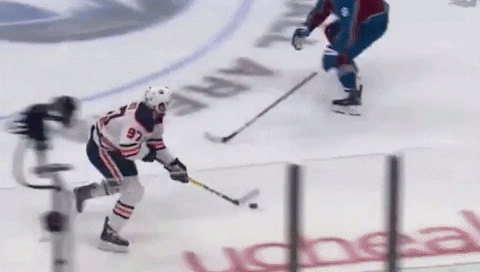Defensemen Skating Development: Keeping Clean Feet
The First Part of Developing Defensemen with Great Mobility
This is the first part of a look at defensive skating in ice hockey. Next week we will dive in even further.
Developing any great athlete starts with the ability to move well. Defensemen need to be able to change direction easily to address defensive needs and respond to the offensive opponent.
Avoid Crossing Feet
Let’s watch Morgan Reilly getting caught crossing his feet by Connor McDavid.
Yikes.
After studying the great defensemen of the world, you’ll notice they have “Clean feet.” A few items go into this, but a large piece is avoiding crossing your feet over. When crossing your feet, you become vulnerable to a change of direction by the opposition. You’ll have to let your feet finish crossing and then move again, often needing to cross your feet again!
Shuffle Skating
Instead of crossing feet, defensive players can shuffle while staying with the offensive player. Once the moment presents itself, the defensive player can apply body contact or position before possession. Here is an example from Hall-Of-Famer Nicklas Lidstrom:
Another example of Lidstrom’s clean feet involves a pivot from backward to forward skating.
Loading and De-loading Edges.
Pivots are part of the ability to stay with offensive players. A player who “skates on top of the ice” is common slang for a player that has a great glide, where they are on neither the inside or outside edge. They can then easily shift in any direction by either rolling to the edge or picking up their feet to place the blade wherever they desire. The opposite would be a player who “skates in the ice.”
This tendency also allows for seamless pivots. Watch how Lidstrom pivots by lifting his lead foot and pushing with the trailing foot that is well placed under his body so it can easily generate power. Plus no crossing of his feet!
We see the same footwork being deployed by Cale Makar on Connor McDavid. Makar’s skating unloads his edgework into a glide that allows for a great, clean change of direction with minimal/no loss of speed.
Next week we dive into defensive posture when skating. Read now:
Further Reading
Using the body’s natural kinetic chain to improve your skating
How to Poke-Check Better with Jared Spurgeon, Nicklas Lidstrom & Cale Makar





